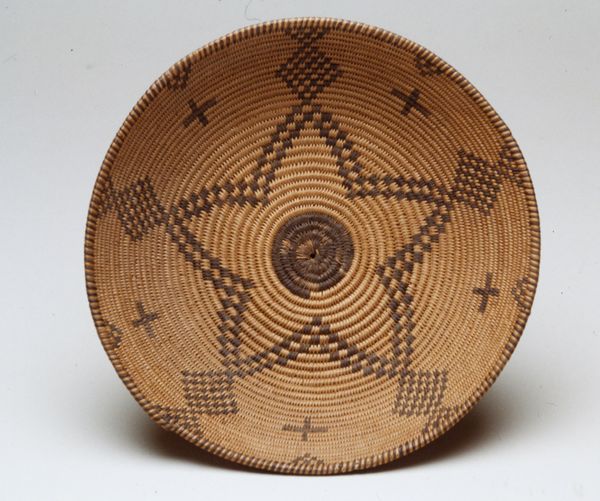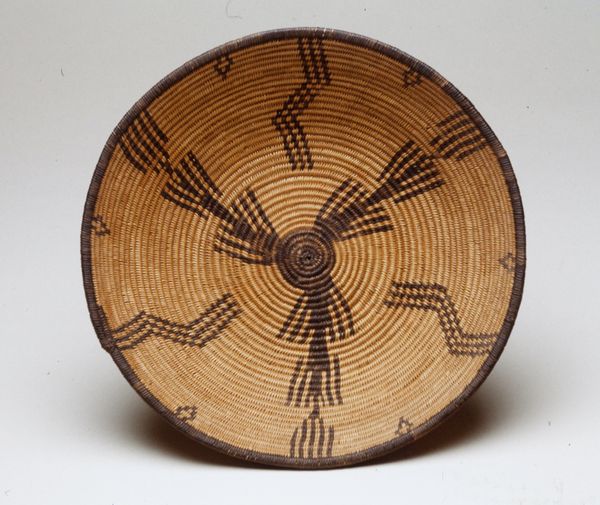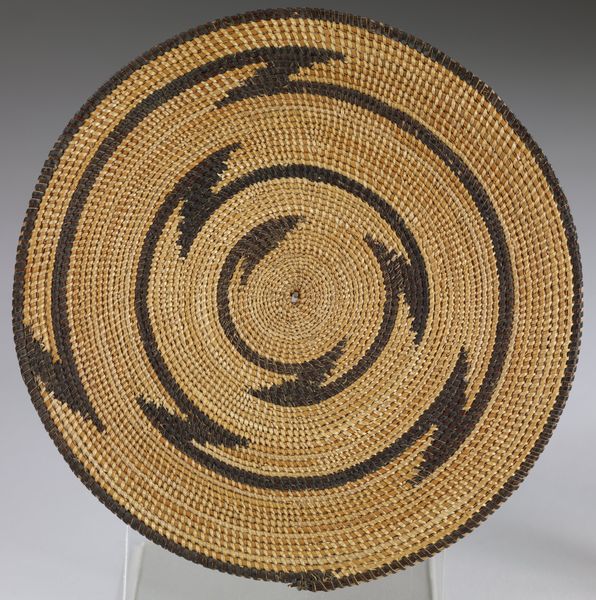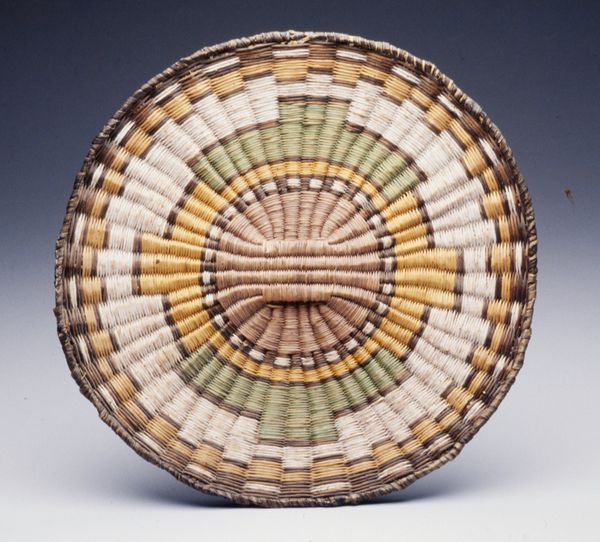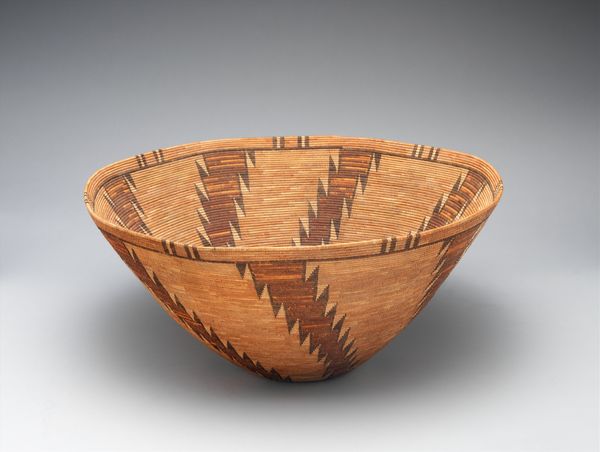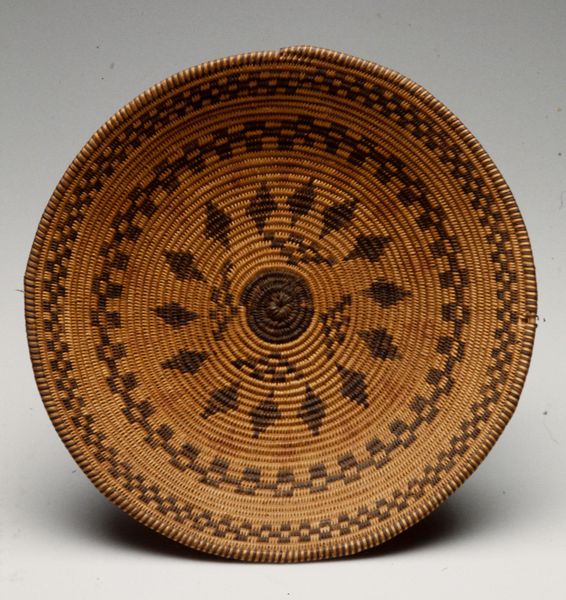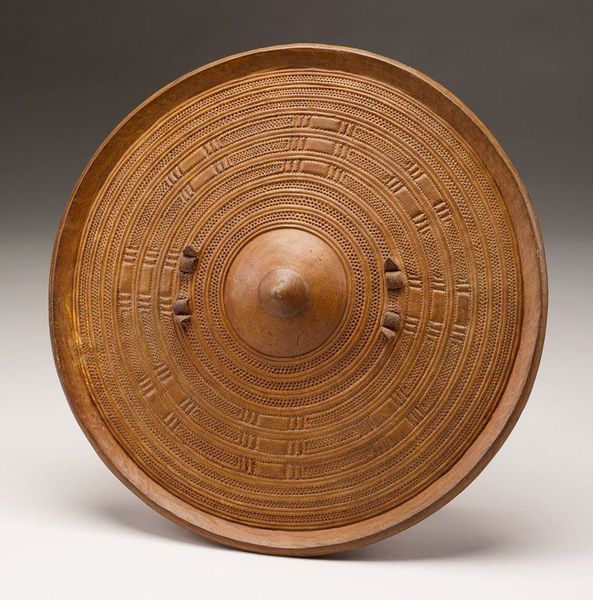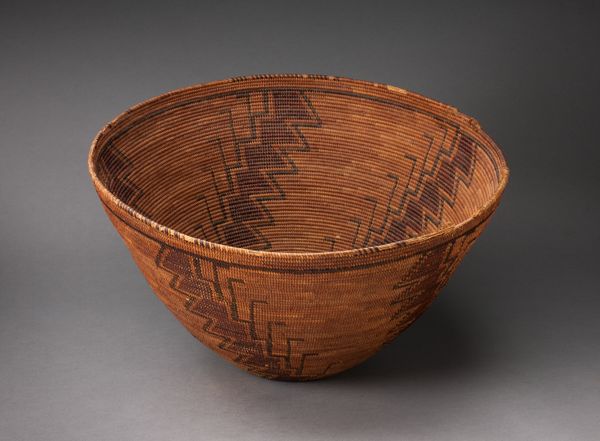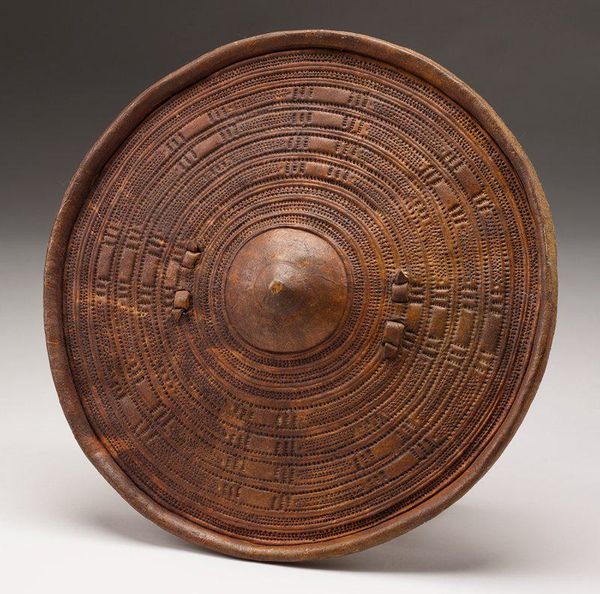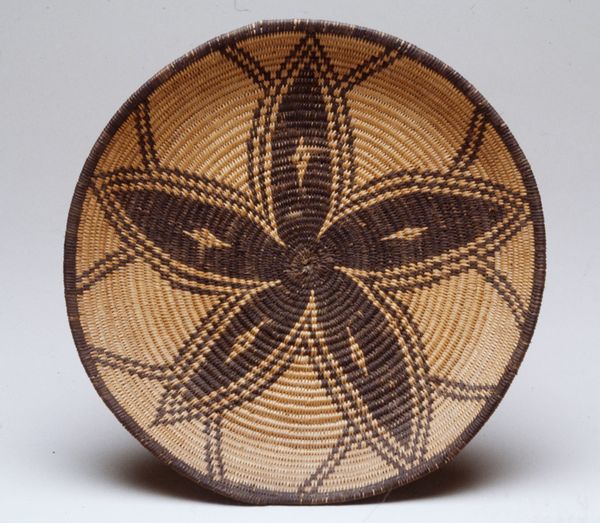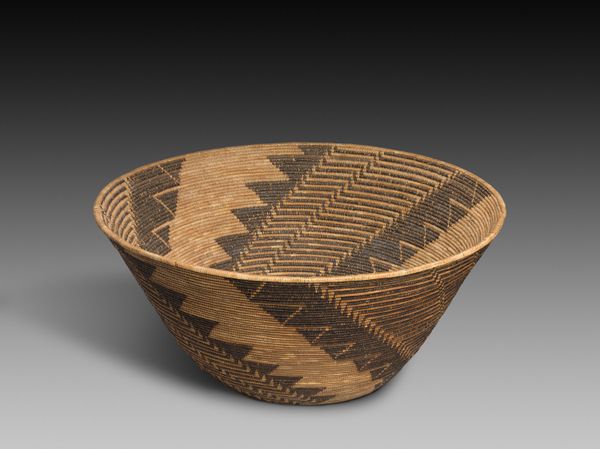
drawing, carving, print, metal, bronze, wood, engraving
#
drawing
#
neoclacissism
#
carving
# print
#
metal
#
landscape
#
bronze
#
geometric
#
romanticism
#
wood
#
academic-art
#
decorative-art
#
engraving
#
miniature
Dimensions: height 30.0 cm, diameter 74.8 cm
Copyright: Rijks Museum: Open Domain
Editor: This object, dating from around 1800 to 1808, is titled *Het onderstel van het planetarium, tellurium, lunarium*. It’s an intriguing mix of materials – wood, bronze, and other metals, incorporating carving, drawing, engraving, and printing techniques. I find its blend of geometric shapes and zodiacal depictions quite compelling. How would you interpret this work? Curator: Immediately striking is the radial symmetry dominating the piece, accentuated by the concentric bands displaying the months and zodiac signs. Note the considered contrast between the dark, sharply defined engraved lines of the lettering and the lighter wood panels. The central, striped disc creates a vortex, drawing the eye toward the brass mechanism. How does the geometry influence our understanding of its function? Editor: It’s designed as a base for a planetarium, so the concentric circles and radial divisions reflect celestial orbits. But is there more to it than just its intended functionality? Curator: Function certainly dictates form here. The quality of materials and precision craftsmanship reflect Enlightenment values: reason, order, and scientific inquiry. Consider how the aesthetic draws upon and merges Neoclassical and Romantic art movement traits – while Neoclassicism contributes clean, geometric lines, Romanticism infuses an element of sublime and mystery. Editor: That’s a fantastic point; I see that balance now. So it's the synthesis of these styles with its utilitarian purpose that makes it so engaging? Curator: Precisely. It's more than decorative art; it’s a celebration of human understanding of the cosmos. The materiality supports its symbolic purpose. The formal structure reinforces the very subject it represents. What began as decorative transforms into sublime. Editor: Seeing it purely in terms of composition, the interaction of line and form reflecting purpose, really elevates my appreciation for this unique artifact. Curator: Indeed.
Comments
No comments
Be the first to comment and join the conversation on the ultimate creative platform.
